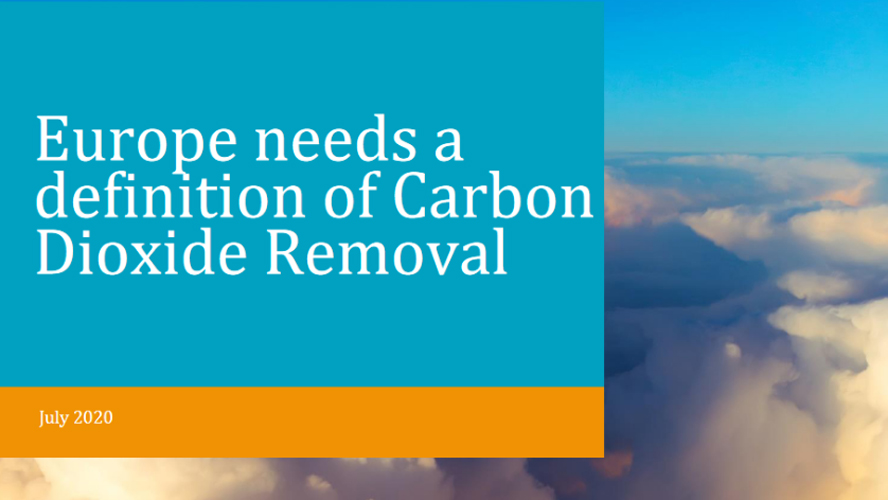The Commission’s proposal for the first European Climate Law aiming for climate neutrality by 2050 acknowledges the role of carbon dioxide removal (CDR), however there is still a gap in the definition of what CDR is and a general lack of knowledge about negative emissions.
In July 2020 the Zero Emission Platform has published a report that aims to contribute to the policy debate on the Climate Law, by providing clear and visual definitions of commonly used terms around Carbon Dioxide Removal.
The report titled “Europe needs a definition of Carbon Dioxide Removal” gives an overview of existing technologies and their potential for emissions reduction, as well as examples of European industrial plants that could go carbon negative in the future.
In addition it also defines four guiding principles drawn from previous research by Tanzer and Ramirez (2019) that must be met for any practice or technology to be commonly considered as achieving “Carbon Dioxide Removal”.
- Carbon dioxide is physically removed from the atmosphere.
- The removed carbon dioxide is stored out of the atmosphere in a manner intended to be permanent.
- Upstream and downstream greenhouse gas emissions, associated with the removal and storage process, are comprehensively estimated and included in the emission balance.
- The total quantity of atmospheric carbon dioxide removed and permanently stored is greater than the total quantity of carbon dioxide emitted to the atmosphere.


